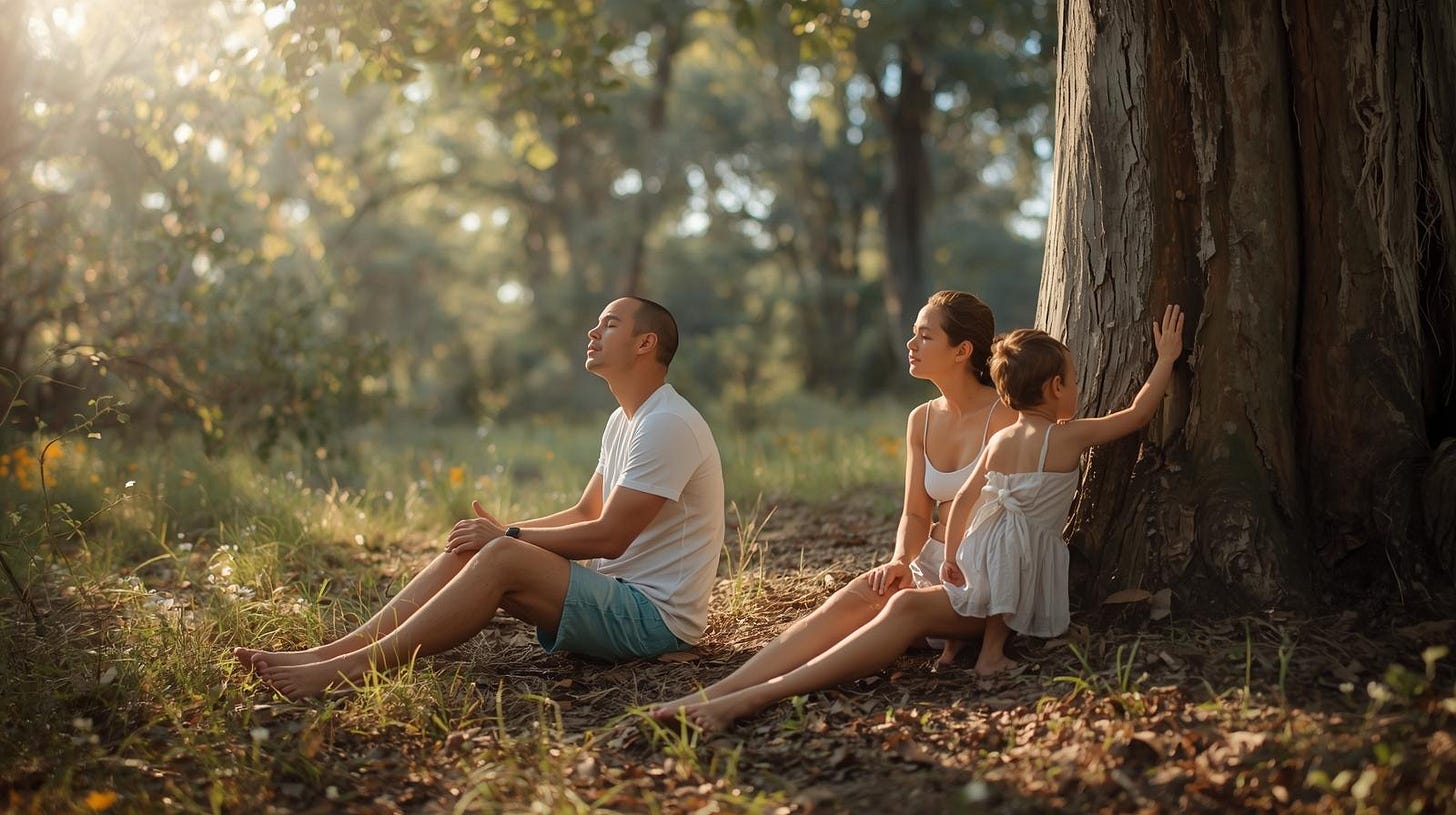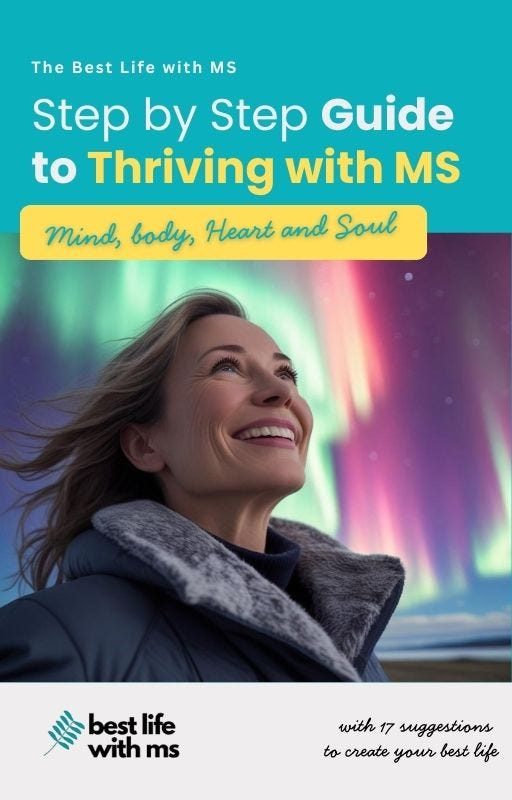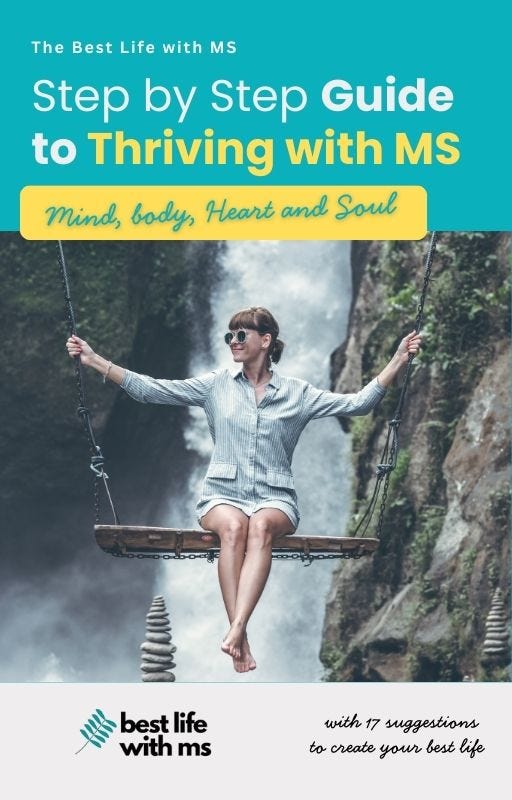This article was first published on Best Life with MS on 16 September 2025.

It’s a funny thing. People often say ‘go for a walk’ - a long walk- if someone is stressed, depressed, or sick. And it seems to work.
Why is that?
Trees release phytoncides.
They stimulate our immune systems to boosts the number of natural killer (NK) cells in your body.
NK cells are just what you need if you have cancer as they help fight tumours.
But they’re also deeply beneficial if you have multiple sclerosis as they fight Epstein-Barr virus-infected cells. (These EBV predators hide among our B cells and modulate our immune systems.)
In a lab model, it was shown that the fewer NK cells PwMS have, the more MS attacks they have.
That means taking a walk through nature is not just relaxing, it helps you live the best life with MS.
Restorative nature bathing
Like in many things, Asia is way ahead of us than in the west.
The restorative benefits of forests, gorges, and hot spas has been understood since antiquity.
In Japan and South Korea, there’s even government funding to walk in nature for these startling effects.
It’s called shinrin-yoku.
Shinrin-yoku, or forest bathing, is the Japanese practice of mindfully immersing oneself in a natural environment to de-stress, improve wellbeing, and boost the immune system.
The Forest Combats Depression
An inspired study published in March 2025 looked at 31 women with depression or depressive tendencies. Researchers set out to compare forest walking with city walking.
One group was taken to a Japanese cypress forest park. The other to a city area of Nagano with very few broadleaf trees.
Both groups walked 2.5 kilometres morning and afternoon (for a total of 5 kilometres). This was done two times.
Blood tests and questionnaires were taken before the experiment and after.
The results
Forest bathing significantly decreased self-rated depression scores compared to the city walkers.
Forest bathers also had:
significantly increased concentrations of blood serotonin,
significantly increased levels of oxytocin and IGF-1 in blood,
significantly increased scores for positive feelings,
reduced scores for negative emotions compared with city walking group.
In addition, forest walkers had:
reduced subjective fatigue symptoms and
improved sleep quality.
I never did shinrin-yoku intentionally when I lived in Japan.
But I did see whole families crossing wide-span red bridges and staring wide-eyed at stunning gorges.
Bathing in onsen (hot springs) with red faced monkeys scampering around (I did do that).
And picnicking under the cherry blossoms with friends at the start of Spring.
In other words, escaping their workstations to enjoy nature, all year-round.
How to Practice Shinrin-Yoku: A Beginner’s Guide
Allow for Quiet Reflection: Find a comfortable spot in nature to sit and simply be. This is a time for quiet, non-judgmental observation.
Find a Green Space: Choose a natural area that feels comfortable and accessible. I love my national park, but in winter, I have a garden.
Turn Off Devices: Leave your phone in the car or on airplane mode. Disconnect from the digital world to fully immerse yourself.
Engage Your Senses: Take a few moments to listen to the sounds of nature, feel the texture of bark or leaves, smell the earthy scent of the forest, and observe the sunlight filtering through the trees.
Walk Slowly: Don’t have a destination in mind. Meander at a gentle pace, allowing yourself to notice the small details you might otherwise miss.
It’s almost school holidays where I am. One activity always on the two-week list is 3 days camping in the national park. It’s a screen-free detox that’s hard work but scrubs everyone clean — inside and out.
Be well XO
How do you unwind in nature? What’s your kind of shinrin-yoku?
Sources:
Li, Q., Kobayashi, M., Wakayama, Y., Inagaki, H., Katsumata, M., Hirata, Y., Hirata, K., Shimizu, T., Kawada, T., Park, B. J., Ohira, T., Kagawa, T., & Miyazaki, Y. (2009). Effect of phytoncide from trees on human natural killer cell function. International Journal of Immunopathology and Pharmacology, 22(4), 951–959.
Zhao Y, Zhang Q, Zhang B, Dai Y, Gao Y, Li C, Yu Y, Li C. Epstein-Barr Viruses: Their Immune Evasion Strategies and Implications for Autoimmune Diseases. Int J Mol Sci. 2024 Jul 26;25(15):8160. doi: 10.3390/ijms25158160. PMID: 39125729; PMCID: PMC11311853.
Li Q, Takayama N, Katsumata M, Takayama H, Kimura Y, Kumeda S, Miura T, Ichimiya T, Tan R, Shimomura H, Tateno A, Kitagawa T, Aoyagi Y, Imai M. Impacts of Forest Bathing (Shinrin-Yoku) in Female Participants with Depression/Depressive Tendencies. Diseases. 2025 Mar 28;13(4):100. doi: 10.3390/diseases13040100. PMID: 40277811; PMCID: PMC12026234.
Chanvillard, Coralie & Jacolik, Raymond & Infante-Duarte, Carmen & Nayak, Ramesh. (2013). The Role of Natural Killer Cells in Multiple Sclerosis and Their Therapeutic Implications. Frontiers in Immunology. 4. 63. 10.3389/fimmu.2013.00063.
Just a second, please vote:
Which book cover do you prefer?
I’m midway through writing a manifesto and handbook for Best Life with MS.
Need some help choosing a cover image.
Do you prefer cover A (northern lights) or cover B (waterfall swing).
Cover A
Or Cover B
Please vote A or B in the comments.
Thank you!
Be well XO




